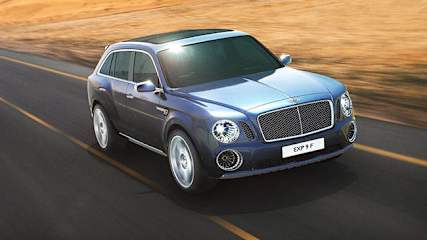BMW i3 2014 review: first drive
By Paul Gover · 25 Jul 2013
A plastic electric car is just about the last thing you'd expect from the company that builds the stonking M3, the X5 family hauler and the luxury 7 Series. It sounds much more like a kiddie's toy than a breakthrough new BMW that is heading down the road to the future. But the i3 is not just a car.It's a new take on 21st century motoring, from its body design to the plug-in power pack and the way it's built, and is seriously impressive. The i3 is roomy, classy, perky, fun, and almost certain to go into the history books as a landmark car.The new-age electric car has a 200-kilometre range that grows to 300 if a buyer adds a tiny motorcycle engine for battery top-up charging and pioneers a new production process that could see plenty of body designs sitting on the same rolling battery pack.After spending time with the brilliant dinosaur called the Mercedes-Benz S-Class - one of today's glorious apex predators - my first drive in the i3 is like discovering the first mammal on the evolutionary road. So the S is brilliantly now, but the i3 is futuristically promising.I've got less than 10 kilometres and three hours to dip into the i3, at the first press preview drive in Munich, but it's enough. For now. The big questions will come for home-ground use from the middle of 2014, where things like the cost of plug-in coal power and the real-world range on Australian roads will be answered.Next year is also when we will know the driveaway pricing, the support system - which sets a new standard in Europe - and the ongoing warranty and service costs. For now, BMW Australia only admits the i3 will cost more than $50,000 and less than $70,000 and that it's doing its best on a dealer network that will sit inside but outside its regular system.The dealership differentiation is because the i3 is not just a car. Apart from the landmark construction process, where its carbon fibre-reinforced plastic body is bonded to a skateboard-style mechanical package like a life-sized Airfix kit, the i3 is the start of a new BMW Group sub-brand that's been created in a similar style to Mini. It will be closely followed by the i8 super coupe and other electrified newcomers.In Europe, the i line means everything from cheap energy deals to special home charging units and a satnav system that's all about finding the next plug-in spot and plotting routes that get maximum range from the lithium-ion battery pack under the floor.“BMW is playing an active role in changing the face of urban mobility. We come another step closer to reality,” the head of planning for Project i, Dr Martin Arlt, tells Carsguide, ironically, at a former World War II airfield.“Our development work has spawned a car that differs significantly from the current automotive industry norm in many ways. We haven't reinvented the car, but we have totally re-defined the basis on which it is created.”There is plenty to see, touch and hear about the i3, but this time it's all about driving. The technology can wait. There are four i3s ready to go, with only a small strip of silly camouflage on the bodywork but big cloth patches covering the cabin detail. Each is fully charged for driving on a course that's laid out to put the emphasis on acceleration, braking and cornering.So I jump onboard, stepping over the wide plastic door sills and through clamshell doors that give great access to the back seat, and slide in behind the wheel. Reassuringly, there are still two pedals on the floor, the wheel is nothing new, and - when I pull back the covers for a sneak peek - there are two big TFT screens to handle the gauges and infotainment.There is no key, just a press button, and once the dash lights up I flick a small switch into D and off we go. Select R and it spins the electric engine, which turns the rear wheels, the opposite way in the single-speed transmission.There is instant and eager response to the accelerator and I can easily believe BMW's claim of a 7.2-second sprint to 100km/h - which compares brilliantly to the 11.9 for a Nissan Leaf. There is no need for braking at first, thanks to a powerful regenerative system to top the battery, as a slight ease on the accelerator has it slowing fine for the first slalom.The i3 responds eagerly to the wheel and is well balanced without too much roll, but the tyres - just 155x19s in the interest of low rolling resistance - start to hum and then squeal long before the chassis reaches its limit.There are three driving modes - Comfort, EcoPro and EcoPro+ - but the difference is about range, although extracting maximum range does dull the response to the accelerator. There is a predictable whirring noise from the electric motor in the tail and a slight wibber-wibber-wibber harmonic at times which is apparently an aberration that will be removed before full-scale production.So I head back to a series of workshops in an aircraft bunker that fill in the detail. BMW claims the i3 is the world's first premium electric car and is intent on lifting any barrier that allows a showroom shopper to say “No thanks, not for me” to a plug-in electric car.There are already other nice electric cars including the Nissan Leaf and Renault Zoe, but not the awful Mitsubishi iMiEV, and the range-extender Holden Volt is also leading on the road to electrification of motoring. But they are really just converted petrol projects, not a ground-up electric deal that's already been tested using converted 1-Series ActiveE cars that have covered vast development kilometres.I've tried the ActiveE and found it great, if overweight, while the Leaf is nice for a while and the Volt is good for long trips but very cramped in the back and boot. The Zoe will be better but not an i3.What makes the BMW different is a rear-wheel drive layout, lightweight construction that means it weighs just 1195 kilograms, and a no-compromise approach that even means the plug-in port is in the right-rear corner of the car - where you would normally find a petrol point - because it cuts the length of cable needed to feed the battery.Engineers have cleverly sited the 125 kiloWatt electric engine at one side of the multi-link rear suspension, leaving a balancing void on the other side that can be occupied by the range-extender motor. Moving to create comforts, BMW has left the wood in the cabin unvarnished for a motor natural look, there are hemp-fibre door trims, and the lights are low-drain LEDs.In the past, BMW has rushed new technology to the road before it was really ready - I can still recall the original iDrive disaster - but the company is taking no chances with the i-car division. It's promising 30-minute fast charges, affordable eight-hour charging at home, an extended battery support package, and has even created a range of new buzzwords - like eDrive.The full production version of the i3 will be unveiled at the Frankfurt Motor Show in September, when we're also expecting firmer news on pricing and the dealer network for Australia. But, right now, the i3 looks impressive and headed for success.BMW i3Price: estimate $60,000Engine: 125kW/250Nm hybrid synchronous electric motorBattery: 360 volts, lithium-ionCharging time: 30-minute fast charge, 8 hours at domestic socketDrive: single-speed, rear-wheel driveSuspension: front MacPherson struts, rear multi linksTyres: 155x19Performance: 0-100km/h, 7.2s; top speed 150km/hRange: 130-300km









.jpg)





